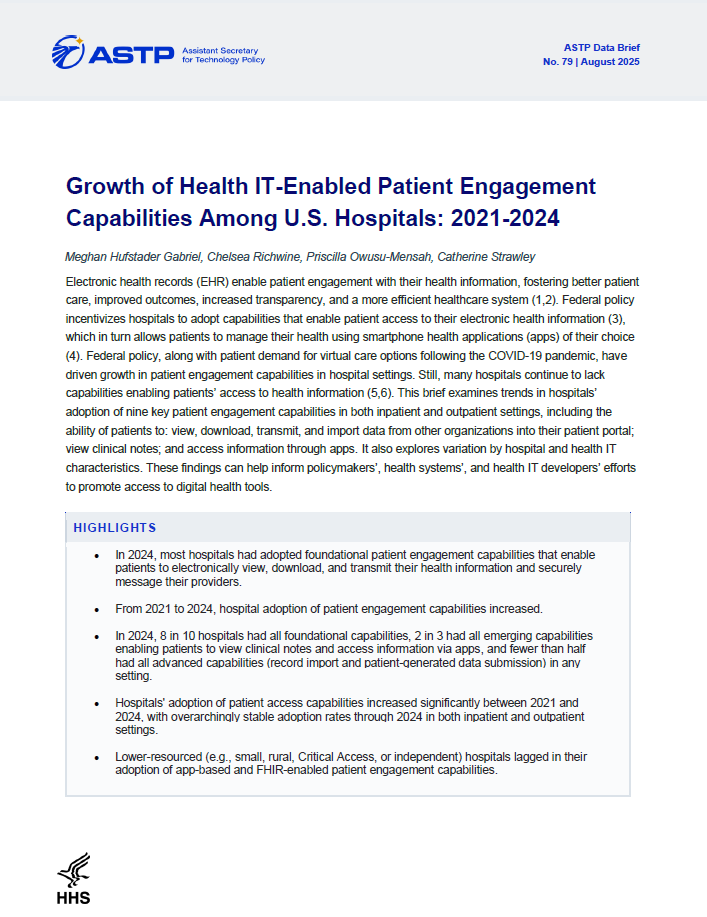
Electronic health records (EHR) enable patient engagement with their health information, fostering better patient care, improved outcomes, increased transparency, and a more efficient healthcare system (1,2). Federal policy incentivizes hospitals to…
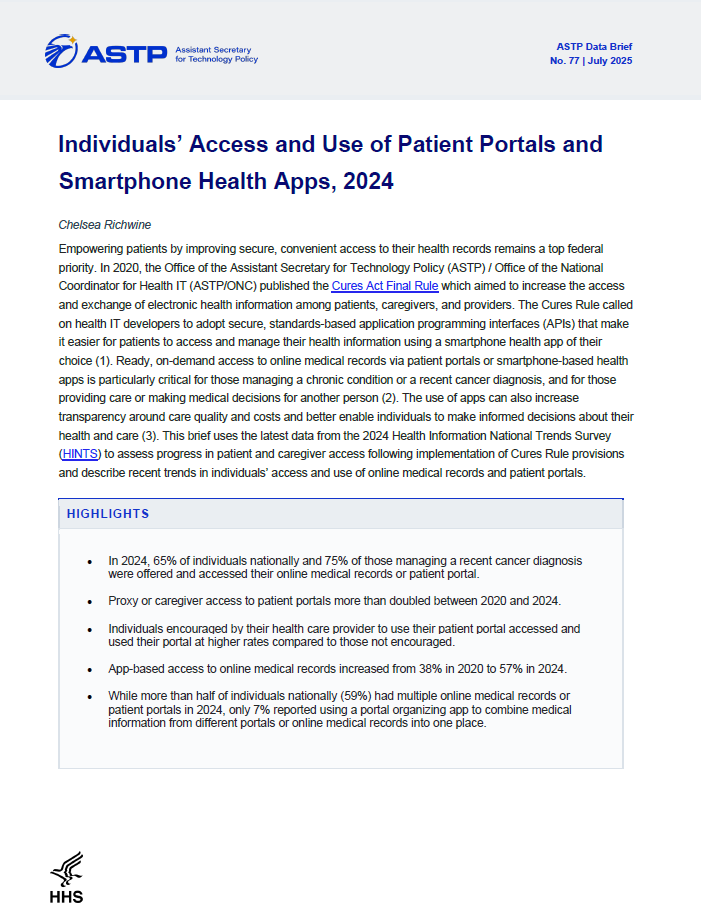
Empowering patients by improving secure, convenient access to their health records remains a top federal priority. In 2020, the Office of the Assistant Secretary for Technology Policy (ASTP) / Office of the National Coordinator for Health IT (ASTP/…
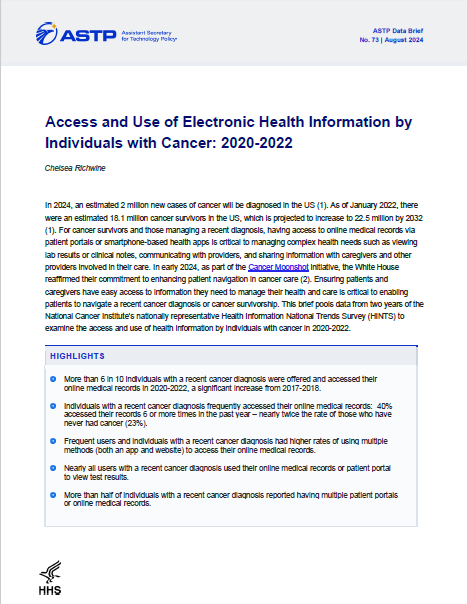
In 2024, an estimated 2 million new cases of cancer will be diagnosed in the US (1). As of January 2022, there were an estimated 18.1 million cancer survivors in the US, which is projected to increase to 22.5 million by 2032 (1). For cancer…
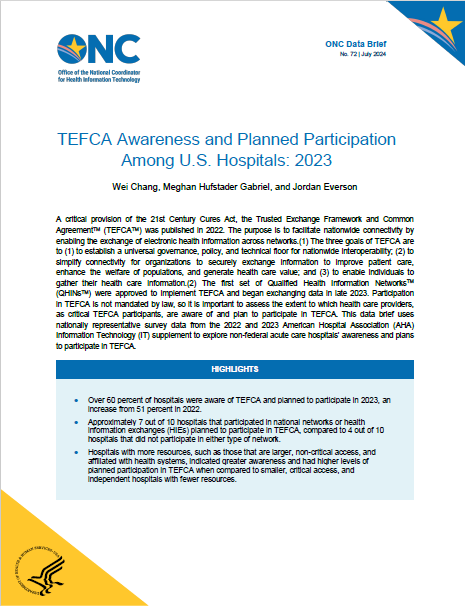
A critical provision of the 21st Century Cures Act, the Trusted Exchange Framework and Common AgreementTM (TEFCATM) was published in 2022. The purpose is to facilitate nationwide connectivity by enabling the exchange of electronic health information…
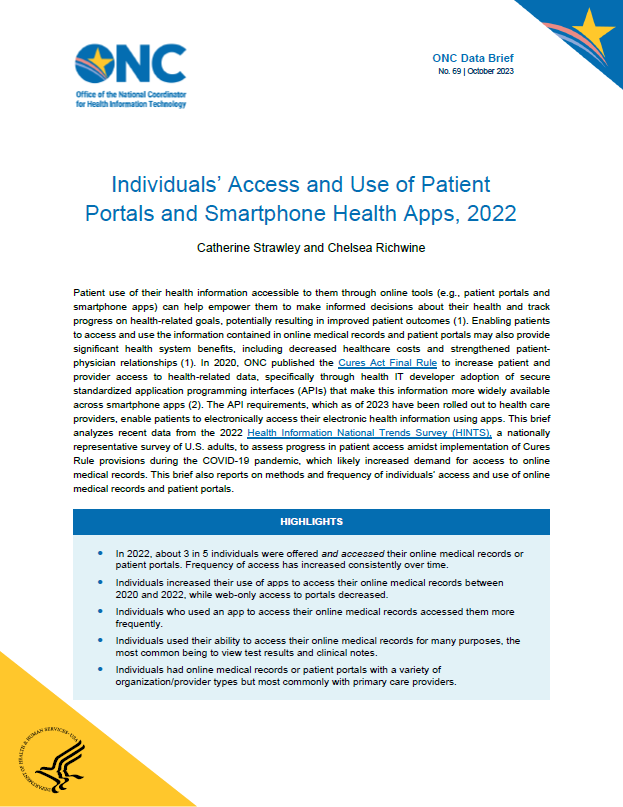
Patient use of their health information accessible to them through online tools (e.g., patient portals and smartphone apps) can help empower them to make informed decisions about their health and track progress on health-related goals, potentially…
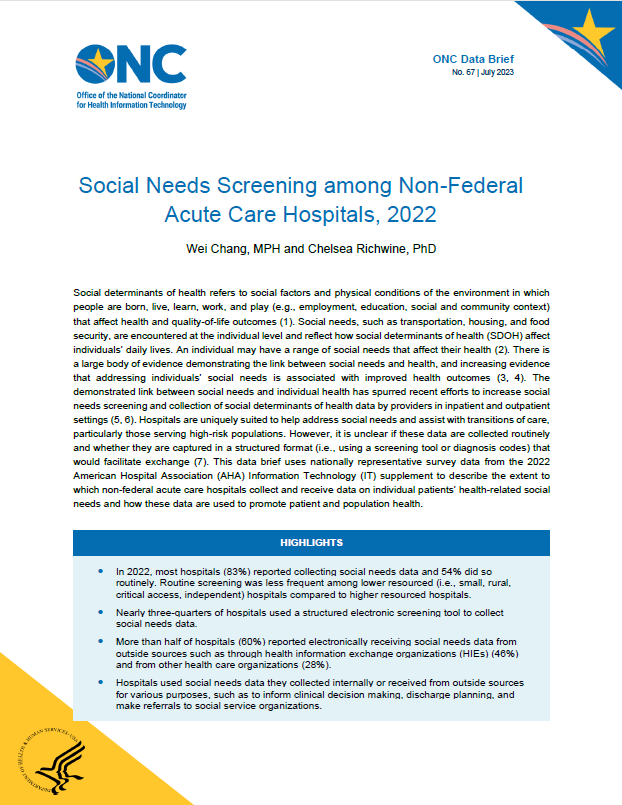
Social determinants of health refers to social factors and physical conditions of the environment in which people are born, live, learn, work, and play (e.g., employment, education, social and community context) that affect health and quality-of-…

Over the past several years, federal policy levers have been enacted to increase patient’s access to their health information. In 2014, hospitals were incentivized by the Centers for Medicare & Medicaid Services (CMS) Electronic Health Record (…
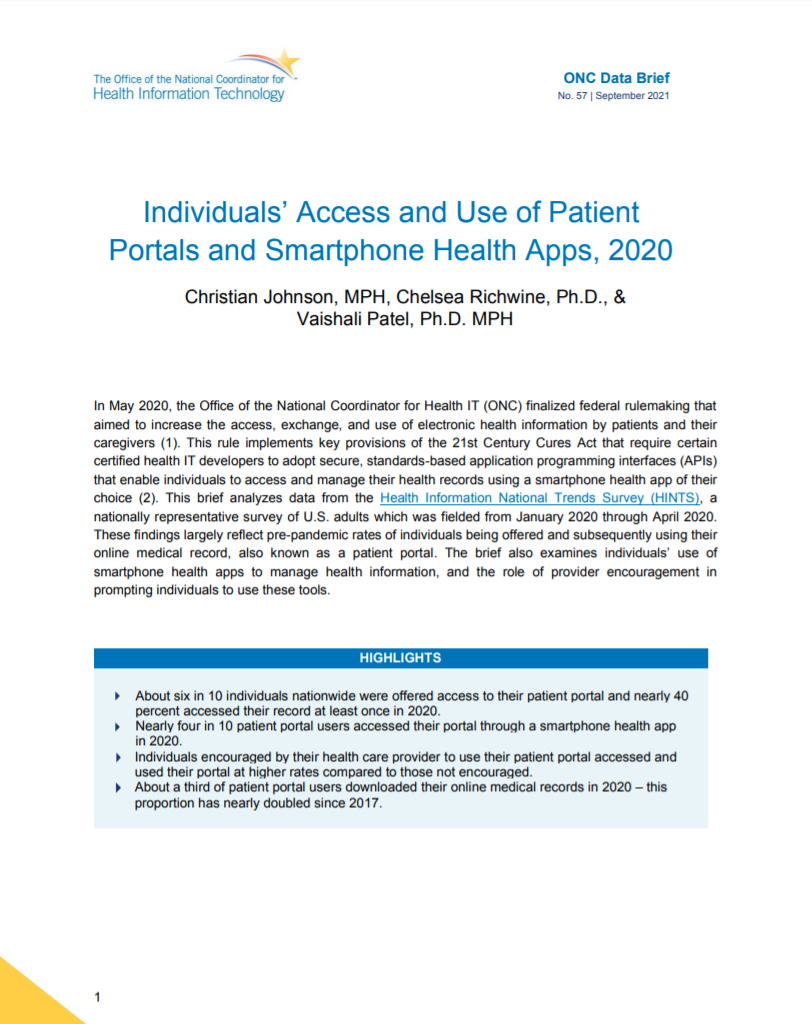
In May 2020, the Office of the National Coordinator for Health IT (ONC) finalized federal rulemaking that aimed to increase the access, exchange, and use of electronic health information by patients and their caregivers (1). This rule implements key…
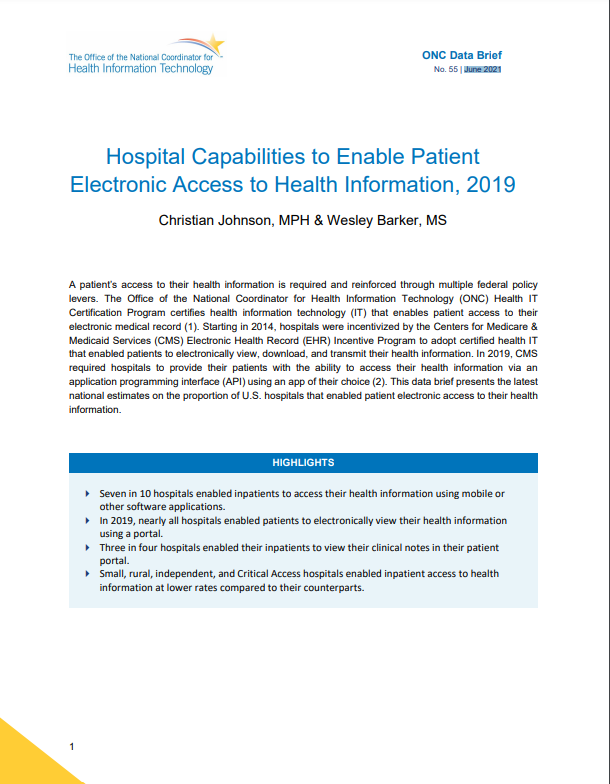
A patient’s access to their health information is required and reinforced through multiple federal policy
levers. The Office of the National Coordinator for Health Information Technology (ONC) Health IT
Certification Program certifies health…
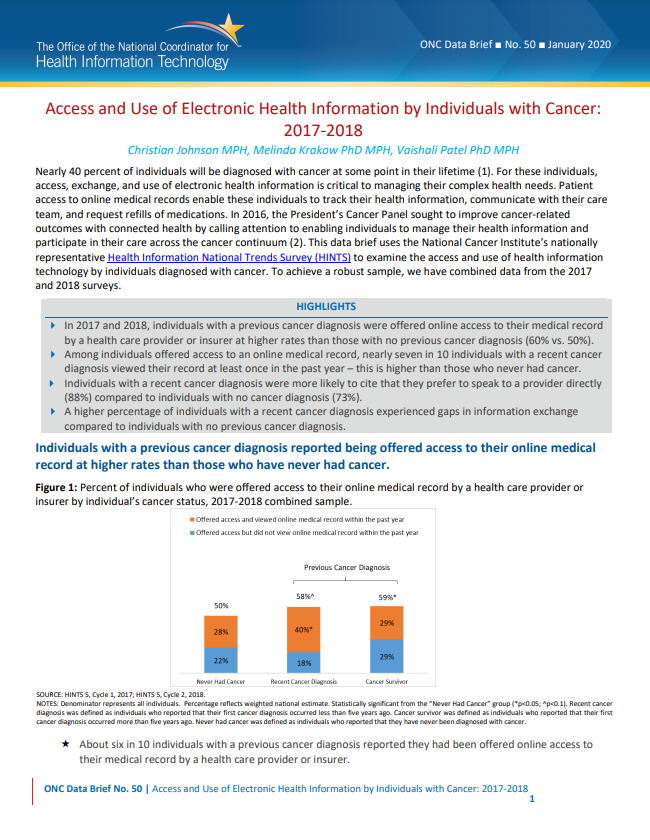
Nearly 40 percent of individuals will be diagnosed with cancer at some point in their lifetime. For these individuals, access, exchange, and use of electronic health information is critical to managing their complex health needs. Patient access to…
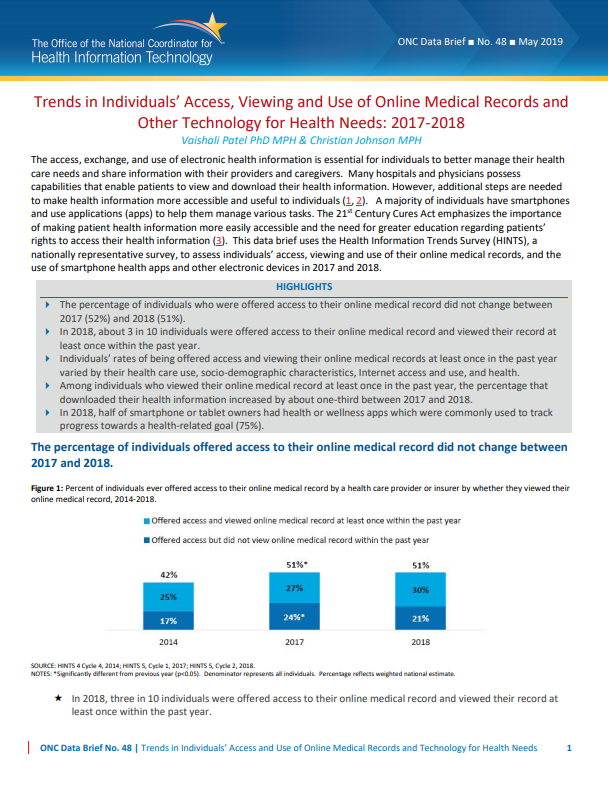
The access, exchange, and use of electronic health information is essential for individuals to better manage their health care needs and share information with their providers and caregivers. Many hospitals and physicians possess capabilities that…
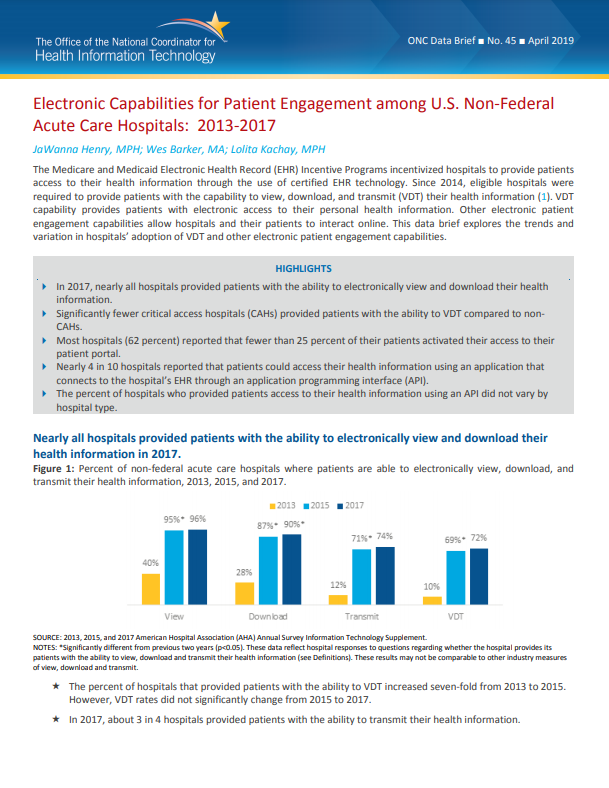
The Medicare and Medicaid Electronic Health Record (EHR) Incentive Programs incentivized hospitals to provide patients access to their health information through the use of certified EHR technology. Since 2014, eligible hospitals were required to…
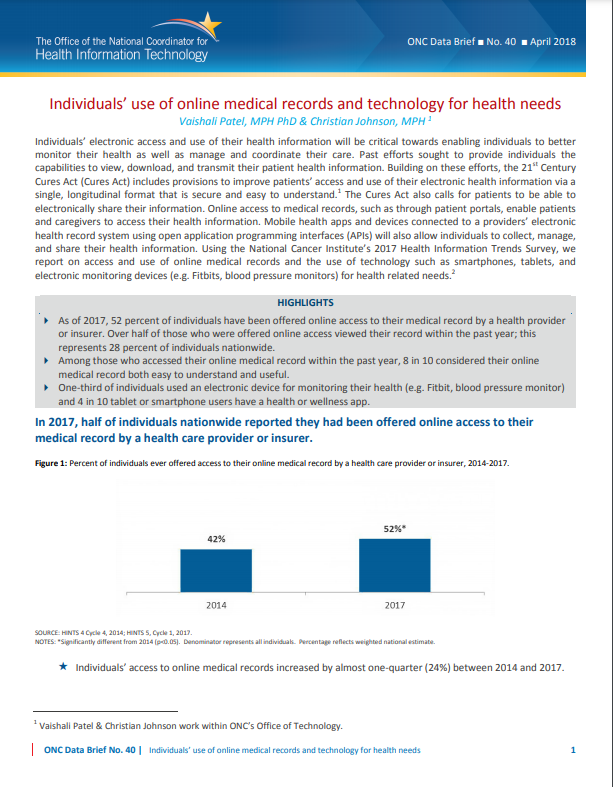
Online access to medical records, such as through patient portals, enable patients and caregivers to access their health information. Mobile health apps and devices connected to a providers' electronic health record system using open…
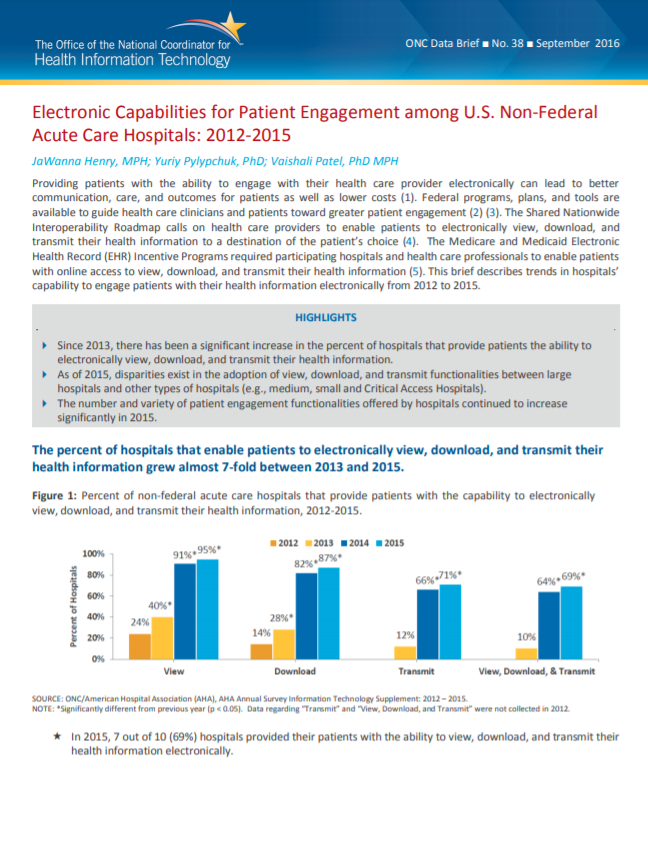
This ONC Data Brief describes trends in hospitals capability to engage patients with their health information electronically from 2012 to 2015. The percent of hospitals that enable patients to electronically view, download, and transmit their health…
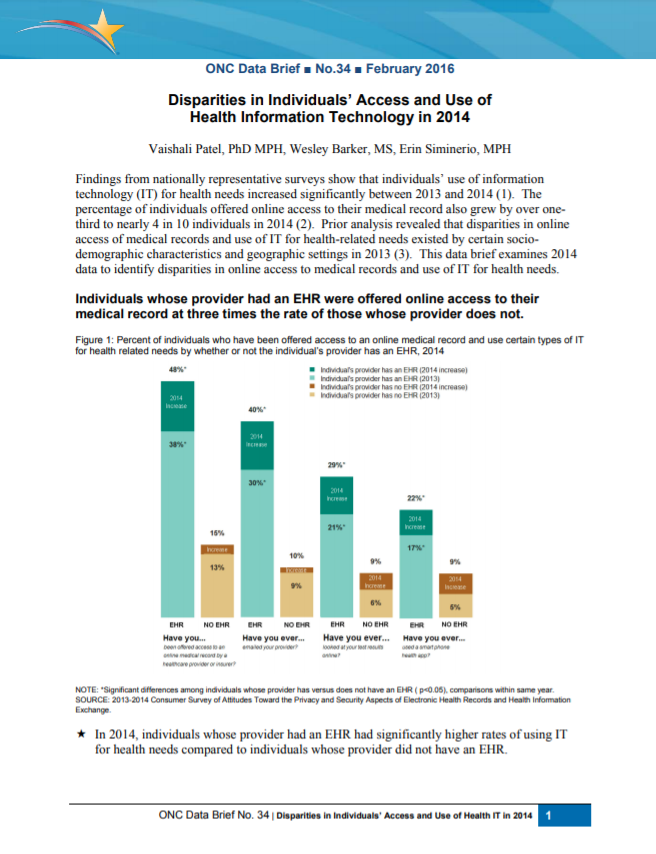
Findings from nationally representative surveys show that individuals' use of information technology (IT) for health needs increased significantly between 2013 and 2014. Prior analysis revealed that disparities in online access of medical…
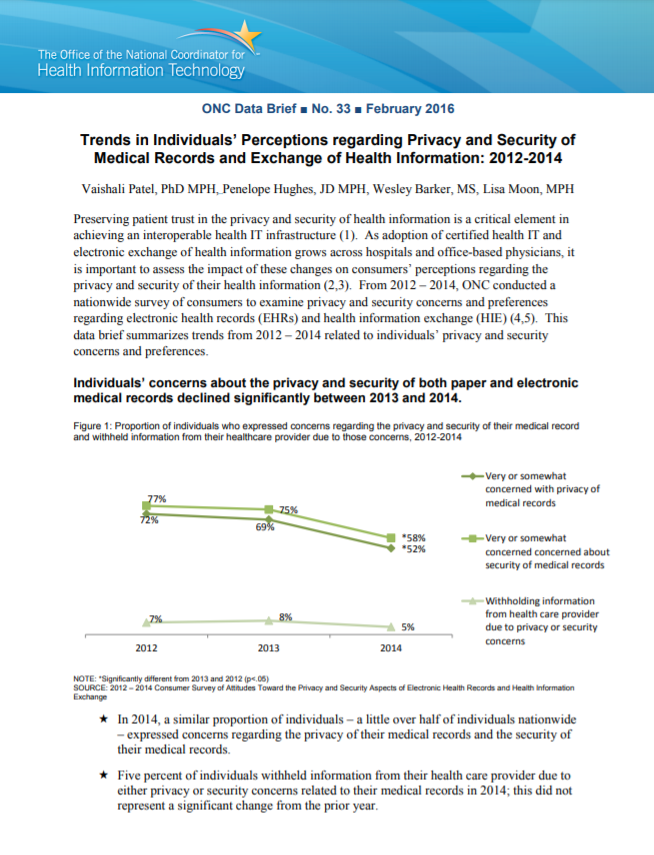
Preserving patient trust in the privacy and security of health information is a critical element in achieving an interoperable health IT infrastructure. As adoption of certified health IT and electronic exchange of health information grows across…
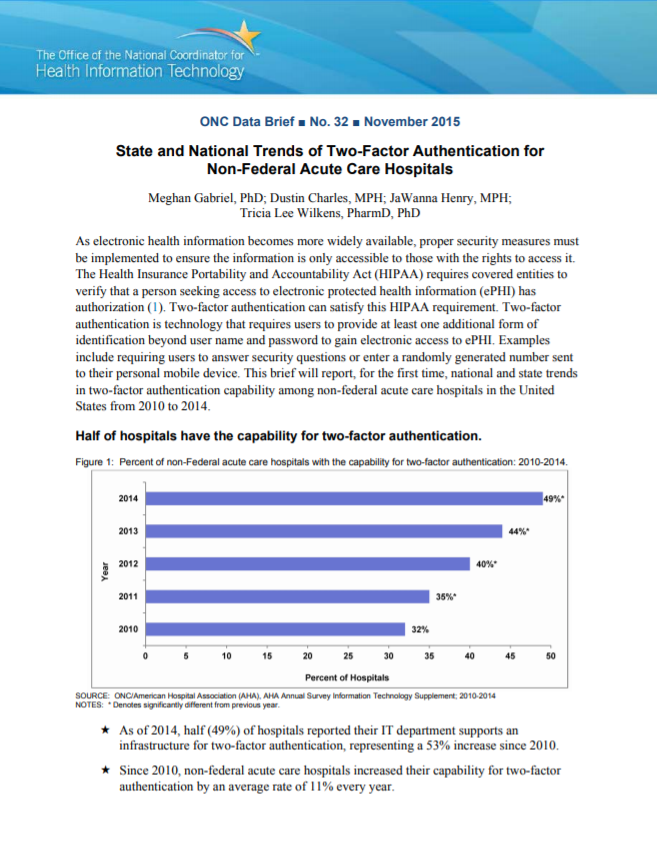
As electronic health information becomes more widely available, proper security measures must be implemented to ensure the information is only accessible to those with the rights to access it. The Health Insurance Portability and Accountability Act…
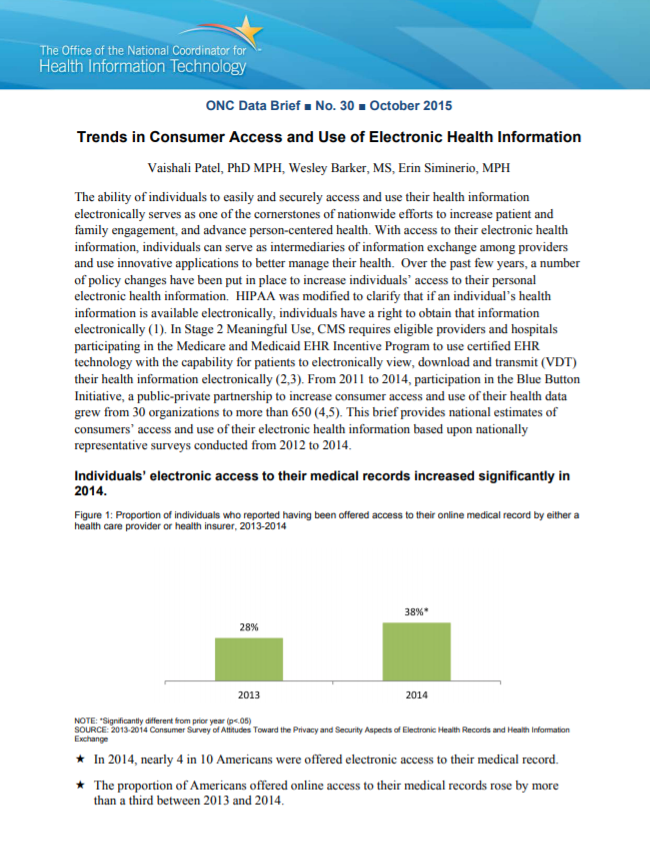
The ability of individuals to easily and securely access and use their health information electronically serves as one of the cornerstones of nationwide efforts to increase patient and family engagement, and advance person-centered health. With…

